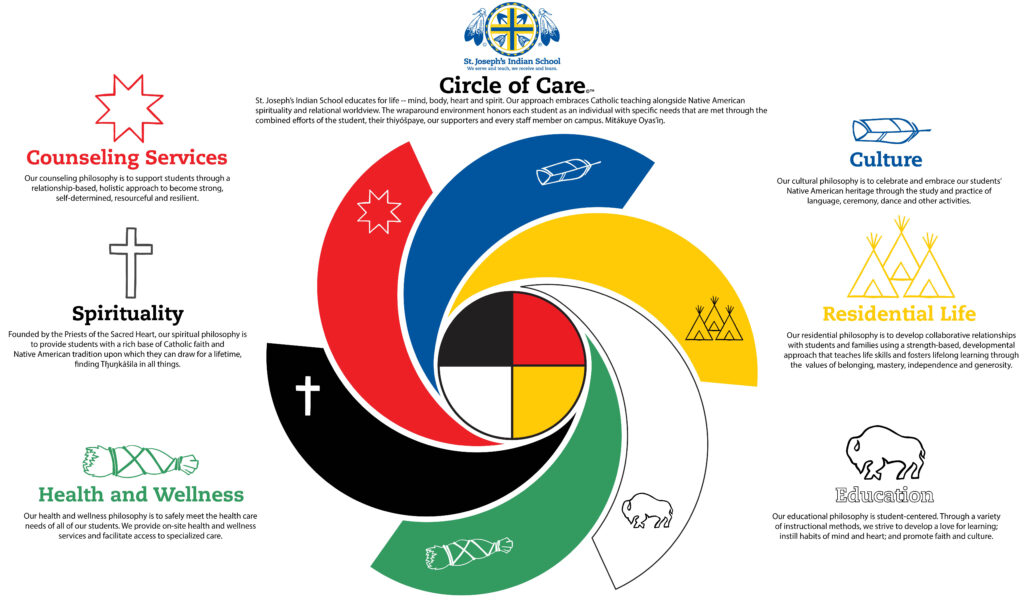
Responding to the Strategic Plan 2020-2030: Decade of Inclusion, Communications and the Child Services Team are in the process of developing new measures of student achievement based on indigenous knowledge systems and the school’s expertise in teaching: the Circle of Care. The model seeks to measure student growth not in the linear Western European way but through the relational worldview appropriate to their culture. The Circle of Care illustrates our approach to educate for life – mind, body, heart and spirit.
Hear Executive Director of Child Services Jennifer Rener-Meyer explain the Circle of Care on our Hočȟoka Podcast.
Different from generally accepted ways of evaluating student progress, the idea is to meet students where they are in a culturally thoughtful way. Indigenous ways of knowing reflect a way of being in the world based on the relational worldview. In our world today, there are two predominant worldviews – linear and relational.
The linear worldview is rooted in Western European thought. It is the worldview of most European Americans. It is rational, logical, and systematic. Time is progressive and sequential.
In general, Native Americans, whatever their place from traditional to assimilated, tend to adhere to a relational worldview, which has its roots in tribal culture. This worldview is intuitive and imaginative and sees life and time as a circle moving through cycles.
At St. Joseph’s Indian School, we embrace Catholic teaching alongside Native American spirituality and the relational worldview. Our wraparound environment honors each student as an individual with specific needs met through the combined efforts of the student, their thiyóšpaye, our supporters and every staff member on campus.
The Medicine Wheel at the center of the Circle of Care is the student. Each student is met there as an individual with specific needs. Students are honored wherever they find themselves in the continuum of the circle, whether they arrived yesterday and stayed for a day or are with us for 12 years.
The core elements contain the whole of the wraparound services we provide. They are a six-part harmony of sorts, each enhancing the others with its particular focus, each necessary for the holistic environment we provide.
The next step involves developing a system of student measurement built off of our current home and school logs with input from the student, family and staff who work with them. Staff input will inform the development of this system.


